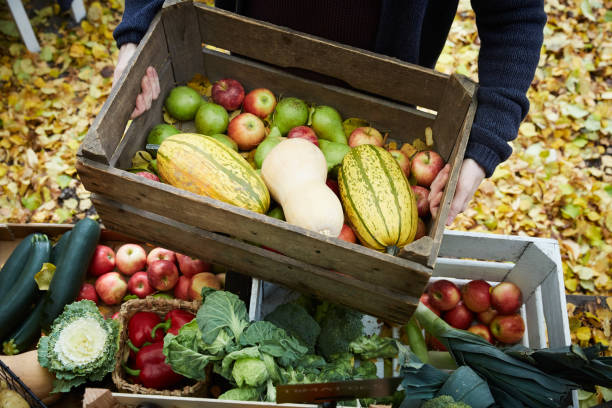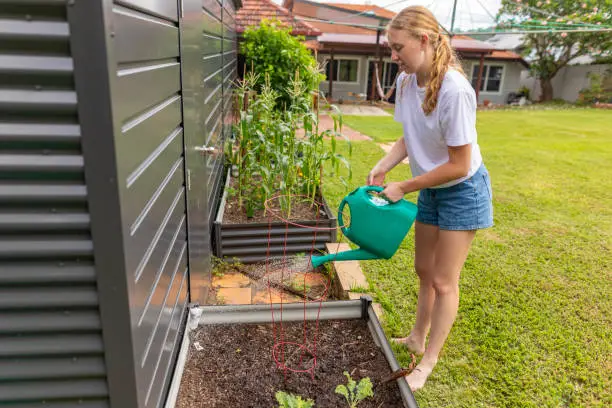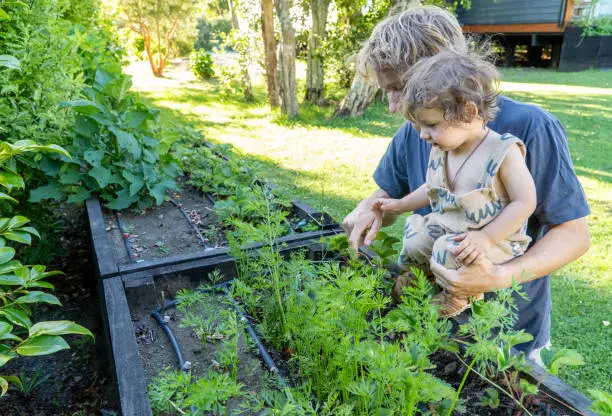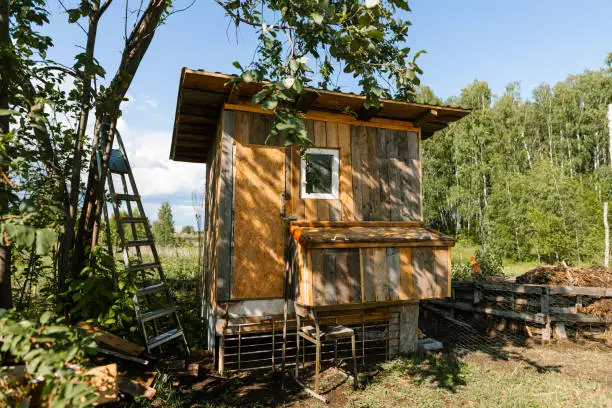Winter is coming, so prepare your backyard homesteading. Let’s go into the details of winter preparation.
Think about your garden first. Late-season crops should be harvested now. Root vegetables like carrots and beets can survive a slight frost, but not indefinitely. Gather anything you can before Jack Frost kills you.
You are next, composting. Your compost pile may slow as temperatures decrease, but it won’t cease operating. Turn it to aerate, and add fresh greens if you have them. This maintains microbial activity when temperatures drop.
Consider mulching or strawing garden beds. This layer blankets your soil, warming it and minimizing winter rain and snowmelt erosion. Mulch will break down and replenish your soil in spring.
Let’s discuss your pets. Winter requires extra care for chickens. Keep their coop draft-free and ventilated—a tricky balance! Insulate with straw bales outside or old blankets inside (away from heat sources). Remember that chickens require water even in the winter! Here, heated waterers are invaluable.
Other livestock? Goats? Similar story: wind and rain shelter is essential. They’ll cuddle for warmth, but a dry bed makes all the difference.
Winter water systems may be a nightmare without preparation—drain hoses after use to avoid freezing and cracking. Rain barrels and other collecting systems should be drained or set up to prevent ice from bursting.
Greenhouses extend the growing season but require specific care. Door and window seals should be checked to keep warm and cold air out. An extra layer of plastic sheeting inside can offer insulation—like a sweater!

Remember tools! Gather all your shovels, hoes, rakes, etc., and clean them before storing them for winter. A small application of oil prevents rusting on idle metal parts for months.
Firewood—if you use wood heat in winter or love bonfires, stack your woodpile high! Cover it to prevent snow from soaking through—wet wood burns poorly.
Before severe snowfall, examine fences and gates surrounding your property. Fix any weak places now rather than digging through knee-deep snow to fix something that broke under strain.
Winterizing includes mental and physical preparation! When cabin fever hits, prepare indoor activities to boost morale.
Lastly, stock up on food, first aid kits, and emergency gear before large storms.
Do you have fruit trees? Burlap young trees to prevent bark cracking in freezing conditions. Dead or diseased branches should be pruned immediately to avoid disease winter spread.
Consider a cover crop. Rye and clover provide nutrients, reduce erosion, and control weeds. Till them into the soil in spring for natural fertilizer.
Remember perennials. Reduce dead foliage to avoid pests and infections—mulch plant bases to insulate roots. Cover fragile perennials with leaves or straw to prevent deep freezes.
Keep a small part of your pond ice-free to release gasses and keep fish healthy. A pond heater or floating ball can avoid total freeze-over.
Expect power outages. Carry extra batteries, a portable charger, and non-perishable food. If you’re using electric heat or water pumps, a backup generator can save the day.
During garden equipment winterization, hoses and irrigation systems should be checked for leaks and damage. To avoid cracking, keep hoses warm and dry.
Earthy Guide to Spring Planting and Soil Preparation in Backyard Homesteading
You’ve chosen backyard homesteading. You did well! Nothing beats cultivating your food by hand. Before planting, let’s prepare the soil because healthy soil is essential to a successful garden.
First, study your soil. Take a handful and feel it. Is it sandy? Clay-like? Loamy? This will indicate your material. Sandy soil drains swiftly but won’t retain nutrients. Clay holds water but might suffocate roots if it is too dense. Loam soil is perfect.
Testing your soil’s pH may be helpful. You can buy a simple kit at a garden center or send a sample to a lab for more information. Most vegetables prefer pH 6-7. If your soil is overly acidic or alkaline, additions can assist.

Compost is the best additive. It adds organic matter and nutrients and improves soil structure and drainage. Start a compost pile now! Throw in vegetable peels, coffee grounds, eggshells, and other organic waste that will decompose.
There’s more! To improve fertility, add aged manure or leaf mold. Fresh manure can burn plants due to its high nitrogen content, so make sure it’s well-rotted.
After making your modifications, you can dig in. Stir in compost and other goodies as you turn over the top 12 inches of soil with a spade or tiller. This aerates the soil and helps roots grow.
Do not overlook mulch! Mulching retains moisture, suppresses weeds, and stabilizes soil temperature, making plants happy. Straw, wood chips, and shredded leaves make good mulch.
Time is everything in gardening; therefore, let’s discuss it. Spinach, peas, lettuce, and radishes flourish in milder temperatures, so early spring is ideal. Wait to plant tomatoes and peppers until after the last frost date in your area.
Have you ever heard of companion planting? Growing plants together is an old habit because they benefit one another—think vegetable matchmaking! Marigolds repel tomato-eating bugs, while beans fix nitrogen for maize.
Many beginning gardeners must remember to rotate crops since doing so depletes nutrients and raises disease risk.
Watering can be tricky, especially if Mother Nature doesn’t cooperate, so investing in a rain gauge helps determine how much rainfall is delivered and whether supplement irrigation is needed during dry spells. Overwatering and underwatering can lead to root problems and overall garden plot health.
Irrigation drip systems are great for conserving water directly to roots, decreasing evaporation runoff, and saving heaps of labor compared to heavy hoses and sprinklers. Once installed and timers are set, they work great to automate the process so homesteaders can focus on other things without worrying about hydration status. Lovely green babies are growing dirt beneath their feet…
Plan your garden layout for spring. Consider crop rotation and companion planting while drawing crop locations.
Plant seeds inside 6-8 weeks before frost. Use grow lights to illuminate them. Before planting, progressively harden seedlings outside.
Raised beds increase drainage and soil quality if your natural soil is poor. Compost, topsoil, and aged manure create a nutrient-rich growing medium.
Row coverings can protect young plants from late frosts and pests. By warming your environment, these can lengthen your growing season.
Sow peas and spinach as soon as the soil is workable. Let the soil reach 60°F before planting sensitive plants like tomatoes.
Remember, healthy soil grows healthy plants. Reduce soil compaction by walking on garden beds and adding organic matter often. Aerate with a garden fork if needed.
Finally, journal your gardening. Record what you plant, where, and its success. This will boost garden productivity year after year.





Leave a Reply
You must be logged in to post a comment.